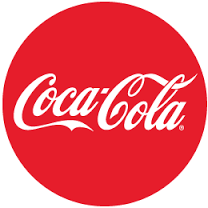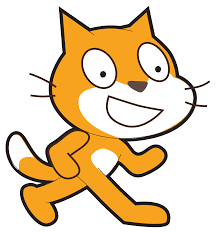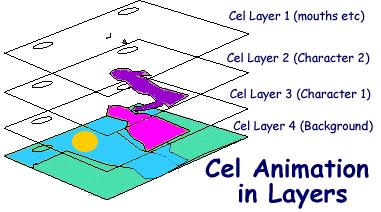So what is animation? Animation happens when you trick the eye and brain into thinking it is seeing moving images but in reality it’s just one single image projected quickly enough to trick the mind. The name for the process involved is called ‘persistence of vision’, it is the name of what happens when the brain is midway through processing frames and the last frame is still being seen so it gets mixed with the next frame. 2D animation is when it only a simple 2D animation using XY axis but in 3D it uses XYZ which is height, length and width.
Animations have been experimented with for many years start out with technology as simple as; Thaumotropes, Zoetropes and Mutoscope. A Thaumotrope is a very early form of animation created by John Ayerton in 1824, this invention was very simple as it consisted of just two discs that (when spun rapidly) give the illusion of one image, for example one side would have a bird and the other would have a cage, this would make it look like the bird was inside the cage.

A Zoetrope is a device created by a British mathematician called William George Horner in 1834, however his version was very basic and was further developed into the version that we all know today, it is simply a steel drum that has images on it, this drum is then spun round to create the illusion of moving images, the drum was designed in a way that allowed the perfect angle to see the images and create the perfect illusion, this was achieved by adding little slits in certain places.

The Mutoscope is a device that was created by Herman Casler in 1894 and was a coin operated device more commonly used on beaches, it is somewhat similar to the telescopes that you may see on the pathways along beaches, however this one was viewed through a special lens and and used a revolving wheel in the centre that was spun round with a handle.

All of these devices used moving still images that were simple trickery of the mind, but if we skip forward a few years to 1980 and we come to the revolutionary age of CGI comes in and storms the TV and movie screens by introducing Andre and Wally B and The Simpsons being one of the most popular shows on TV even today.
Different uses; Animation is mainly used for TV, film and adverts however sometimes it can be used for educational purposes. For example you can use the fun soft looking colours to attract children in and make them concentrate on the fun animations while also learning important information about whatever subject is required. Animations also can appear in the form of banners on webpages and on billboards that may have a video advert on them, for example in New York there are multiple banners and adverts that have video screens which project animations, like Coca Cola.

Animation these days is usually created with Computer Generated Imagery (CGI) which is a much better and effective way of producing good quality animations as it doesn’t require all of the drawing and repetitive effort that the older animations require. Many softwares these days are very capable of producing these animations such as; Blender, Flash and Scratch. Blender is a software that uses a somewhat simple interface and is capable of producing professional looking assets and turns those assets into an animation. I would not recommend this software for beginners as the UI can be sort of complicated but still is simple enough that people with some experience can still use it. Flash is another simple software that is a favourite among animators due to its capabilities as a software and the graphical quality of it is pretty good, the possibilities are practically endless when using this, however some basic knowledge is required to use it, like most other softwares. Scratch is a software that is used mainly to teach school students how to create basic animations or games like pacman, this was the software I grew up with and it allowed me to successfully create an industry standard version of pacman complete with controls and text based speech. The UI is incredibly simple and all of the widgets that allow you to create the animations, are very easy to see and understand, this software is also good for schools because the license to purchase this isn’t too expensive so it is available to many schools.



There are many ways of creating animations and not all of them require a computer to do it, stop motion, clay mation, time lapse, pixilation, cel and flash are all ways of making them.
Stop motion is the name for the process of taking multiple photos of certain objects and moving them slightly in every picture to create the look of the object moving, this is achieved by stringing the images into a sequence and playing the sequence back at a faster pace, this method is one of the less effective ones as it is very time consuming but if you mess up at some point it is easier to correct.
Clay mation is basically the same but the item that is moved is made out of clay and is hand sculpted to into a figure which can be easily manipulated, the figures can be made in other ways like with a 3D printer but then it isn’t claymation it is classed as another form of animation, an example of this would be Wallace and Gromit, the figures in this were created with a Armature which is like a skeleton. This object holds the plasticine in position so the video can be made, for each scene the figure would have to be moved but if it was moved too much then the whole thing would have been reset and the filming crew would have to scrap everything and start all over again, this wasn’t very effective as it took way too long and one mistake meant more waiting and time was not something that Aardman (the company that made Wallace and Gromit) did not have a lot of.

Time lapses are created when you set up a camera to take multiple picture very quickly in the same location for a long time and put the images together and speed up the footage, this can also be done by simply recording the view in video and change the speed in post-editing, for example you can film the sky for a whole day and night and it would look normal but when sped up the clouds or stars would appear to move and zoom through the sky.
Pixilation is the process of slowing down footage and making it look slightly rougher, for example if you wanted to create the illusion of someone flying, you could do this by simply taking multiple pictures of someone jumping in the air and put the images of them actually mid jump and cut out the ones where they are stood on the floor, when the images are put together it would look like they were flying.
Cel or celluloid is a transparent sheet that is drawn on and placed onto another sheet that also has a drawing on, this method was created to save time and allowed producers of shows like the Simpsons to easily use the same background without having to re draw the whole thing, up until season 14 the Simpsons was created with thousands of cels until technology evolved and they decided that modern digital ink and paint would be much more effective and quicker.

Flash is the final example of animation production techniques, it is created by simply using a software like flash or the actual thing itself and merely using commands to make character assets do certain actions or perform certain tasks to a good high quality standard.
One of the oldest forms of animation was created with simple stop motion an involved two people drawing figures onto a blackboard and taking photos of each time they changed something in a frame, then they stuck the pictures together and created this masterpiece, this was possible in 1908 so imagine what the capabilities are like now.